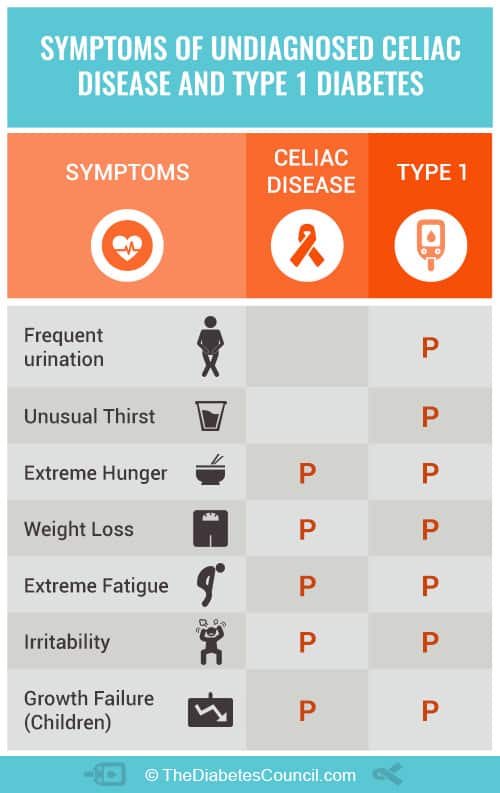However the prevalence of celiac disease is higher among people with type 1 diabetes. Celiac disease patients being overweight is common with one study showing 40 of patients with celiac disease being overweight at diagnosis and 13 in the obese range which puts them at a higher risk for type 2.
Balancing Diabetes And Celiac Disease
celiac and type 2 diabetes is important information accompanied by photo and HD pictures sourced from all websites in the world. Download this image for free in High-Definition resolution the choice "download button" below. If you do not find the exact resolution you are looking for, then go for a native or higher resolution.
Don't forget to bookmark celiac and type 2 diabetes using Ctrl + D (PC) or Command + D (macos). If you are using mobile phone, you could also use menu drawer from browser. Whether it's Windows, Mac, iOs or Android, you will be able to download the images using download button.
The prevalence of type 1 and type 2 diabetes in 1358 celiac patients was compared with the population based.

Celiac and type 2 diabetes. Around 3 8 of people with type 1 diabetes will have biopsy confirmed celiac disease. Type 1 diabetes and celiac disease are both immune mediated conditions and share a similar genetic profile resulting in a significant amount of overlap in patients. There are researchers however that believe that people with celiac disease are less likely to develop type 2 diabetes than the rest of the population.
Concomitant type 1 or type 2 diabetes predisposes celiac patients to severe co morbidities and type 1 diabetes also to poor dietary adherence. There is a definite correlation between diet and diabetes symptoms. Approximately 8 to 10 percent of people with type 1 diabetes also have celiac disease.
Our group just published a research study that shows those with celiac disease are much less likely to get type 2 diabetes compared to people without celiac disease. Studies suggest that eating a gluten free diet without dairy could be good for diabetes and celiac disease a condition characterized by an allergy to gluten. This means that they both involve tissue damage from autoimmune attacks.
This was an unexpected finding and to our knowledge is the first study looking at the prevalence of. Diabetes and celiac the only treatment for celiac disease is following a gluten free diet. Celiac disease and type 1 diabetes are both autoimmune diseases.
Type 2 diabetes is not an autoimmune disease and is caused by hereditary and environmental factors such as obesity poor diet choices and a sedentary lifestyle. Association between celiac disease and type 1 diabetes in adults is still somewhat unclear and that between celiac disease and type 2 diabetes even less known. Type 2 diabetes does have genetic components but they are not associated with celiac disease genes like type 1 diabetes are.
We studied these issues in a large cohort of adult celiac disease patients. In celiac disease the bodys immune system attacks the small intestine whereas in diabetes the body attacks the pancreas. Type 1 diabetes was markedly overrepresented in celiac disease especially in men whereas the prevalence of type 2 diabetes was comparable with the population.
In contrast we dont know a lot about type 2 diabetes and celiac disease. The prevalence of celiac disease among people with type 2 diabetes is the same as for the general population which is about 1 percent.
Balancing Diabetes And Celiac Disease
Prevalence Of Type 1 And Type 2 Diabetes In Celiac Disease A
Balancing Diabetes And Celiac Disease
Balancing Diabetes And Celiac Disease
Prevalence Of Type 1 And Type 2 Diabetes In Celiac Disease A
Balancing Diabetes And Celiac Disease
Balancing Diabetes And Celiac Disease
The Celiac Disease And Diabetes Dietary Intervention And
Table 3 From Type 1 And Type 2 Diabetes In Celiac Disease
Type 1 And Type 2 Diabetes In Celiac Disease Prevalence And
Table 2 From Type 1 And Type 2 Diabetes In Celiac Disease
